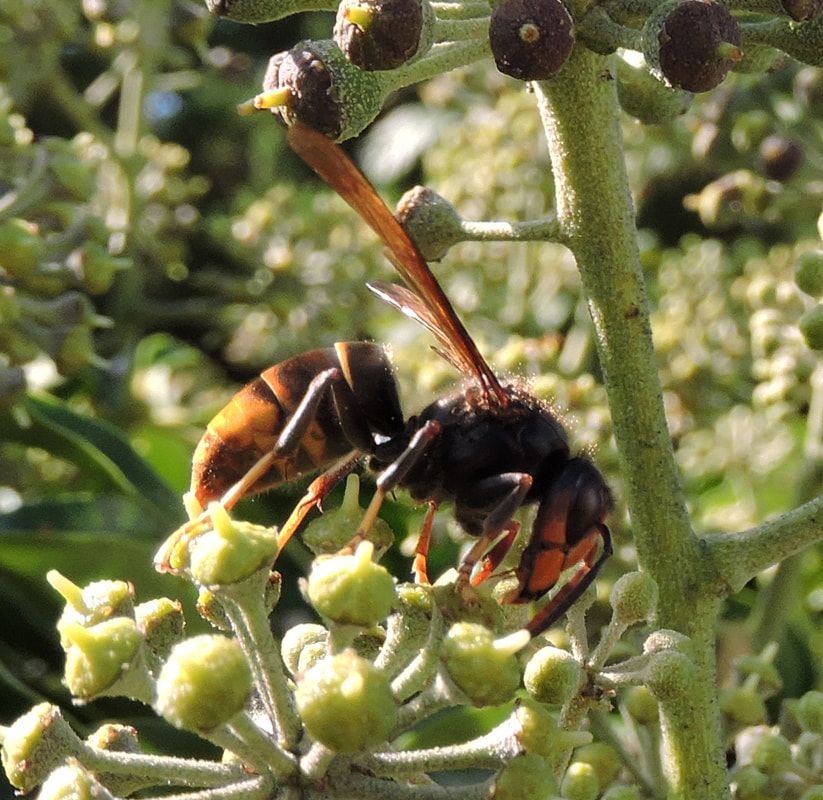|
Nine hundred reported nests in Brittany this year is a frightening figure, writes Stewart Gould, SBKA Vice Chair, who returned from France this week. When you see the huge swathes of trees it becomes apparent that there are lots more. Their nature dictates that they will be close to beehives, but apiculture is an industry in Brittany, with hives all over the place.
Actually seeing hornets and their nests is one of the best ways of establishing where hornets are, but it is primarily retrospective. Hornets' nests look very much like squirrel and magpie nests or mistletoe at a quick glance, but have very distinct edges, as opposed to the ragged ones of other nests and the transparency of mistletoe. Large nests in bare branched trees will only tell you where they were last year, but it is a massive clue to their presence in the area. The only real answer is to instill vigilance and a perception of what to look for and where. Correct ideas of the appearance would be good too. The NBU and BBKA will keep publishing photos of the Asian hornet (the correct one) showing it larger than the European hornet. In description, emphasis is placed on the yellow legs. That is among the last things you notice. What catches the eye is the predominantly black colour, and a marked orange patch on the abdomen. Seasonal feeding preferences should be highlighted along with suitable traps and baits. The internet is alive with videos of home made traps assembled from the likes of 2 litre water bottles, with a funnel arrangement big enough for a double-decker bus to get in and out. Monitoring live traps can be made, but once here, death traps are going to be more appropriate. The key is reliable and concise information. Comments are closed.
|
Archives
March 2024
Categories
All
|
Somerset Beekeepers Association Charity © 2021 Registered CIO Charity 1206483
Affiliated to the British Beekeepers Association
Click here to view our Privacy Policy
Affiliated to the British Beekeepers Association
Click here to view our Privacy Policy

 RSS Feed
RSS Feed
